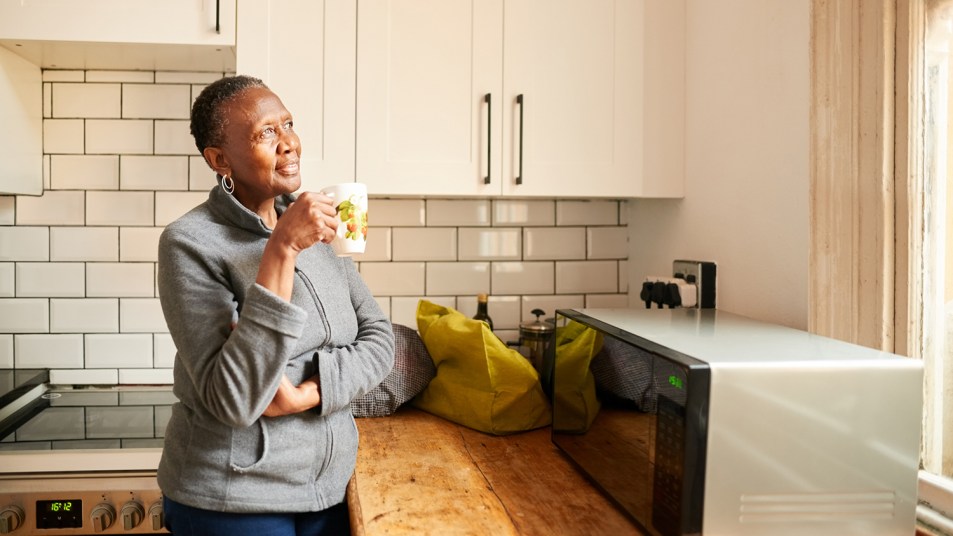6 Things To Do Right Now if You Want to ‘Age in Place’ Without Assisted Living

We all want to live independently for as long as possible. If you’d prefer to “age in place” rather than someday making the move to an assisted living community or nursing home, there are ways you can prepare yourself, your loved ones, and your home environment to help put that goal within reach. Here, experts share six simple things you can do now to ensure your home continues to be the haven you deserve for years to come.
Tap into your ‘why.’
Even though we want to continue living on our own terms, we often delay planning to do so, notes Erin Yelland, Ph.D., an associate professor and interim director of the Center on Aging in the College of Health and Human Sciences at Kansas State University. “It’s never too early to get started — there’s a great deal of research that supports utilizing the ‘power of why’ you want to age in place.” Maybe this is the home where you raised your children, or you have friends in the neighborhood you want to continue to be near. “Taking the time to really think about your ‘why’ can be a powerful inspiration, spurring you to make changes to achieve lifelong independence.”
See your home with fresh eyes.
We’re so used to our surroundings, everything from the placement of furniture to the boxes stacked by the back door becomes “visual white noise,” something we stop noticing, observes Lynda Shrager, author of Age in Place: A Guide to Modifying, Organizing, and Decluttering Mom and Dad’s Home (Buy from Amazon, $17). “Do a walkthrough of your home with a friend.” She’ll likely notice things you’ve overlooked. “The other day, I was working with a lady who uses a walker, and she would always ‘fight’ with a table in her living room — I just moved it four inches and it opened up a new pathway she never noticed.” Also smart: Consult home accessibility lists online, suggests Yelland, like Rebuilding Together’s Safe at Home Checklist from the Administration on Aging.
Consider easy tweaks.
Simple adjustments go a long way, notes Florence Macauley, the founder of AgeWise Home in D.C., offering age in place and concierge services for seniors, people with disabilities, and veterans. “I recommend nightlights — the majority of falls happen on the way to the bathroom. When I worked as a physical therapist, we would give nightlights away.” Other modest modifications include swapping in lever-style door handles and installing grab bars. “They come in stylish designs now, some camouflaged as towel rack/grab bar combos.”
Share your goals with loved ones.
The practicalities of aging in place represent one half of your plan; the other half is emotional support, which Yelland sums up in three words: communicate, communicate, communicate. “Talk with your friends and family, and tell them what you envision your daily life to look like,” she suggests. “When loved ones understand the value of these changes you’re trying to make and your desire to live independently, they’re much more likely to jump in to help.”
Welcome community.
Consider reaching out to community support associations, like your local department of aging, suggests Yelland. “I’ve seen numerous organizations donate their time to help community members age in place, such as youth groups cleaning up outdoor spaces and technical school students volunteering to build ramps. Do not hesitate to ask for assistance.”
Make it easy for all.
When Macauley was recovering from major surgery a few years ago, she made her home more accessible, not just for herself but for her friends. “I moved plates down to the lower cabinets; I lowered my bed by removing the box spring — and I installed a keyless entry,” she recalls. “It was life-changing to be able to have my friends drop off food easily or just visit.” Whether you’re recovering from an illness or making a transition to live independently, staying connected is key to your comfort and happiness.
A version of this article originally appeared in our print magazine, Woman’s World.












